|
|
|
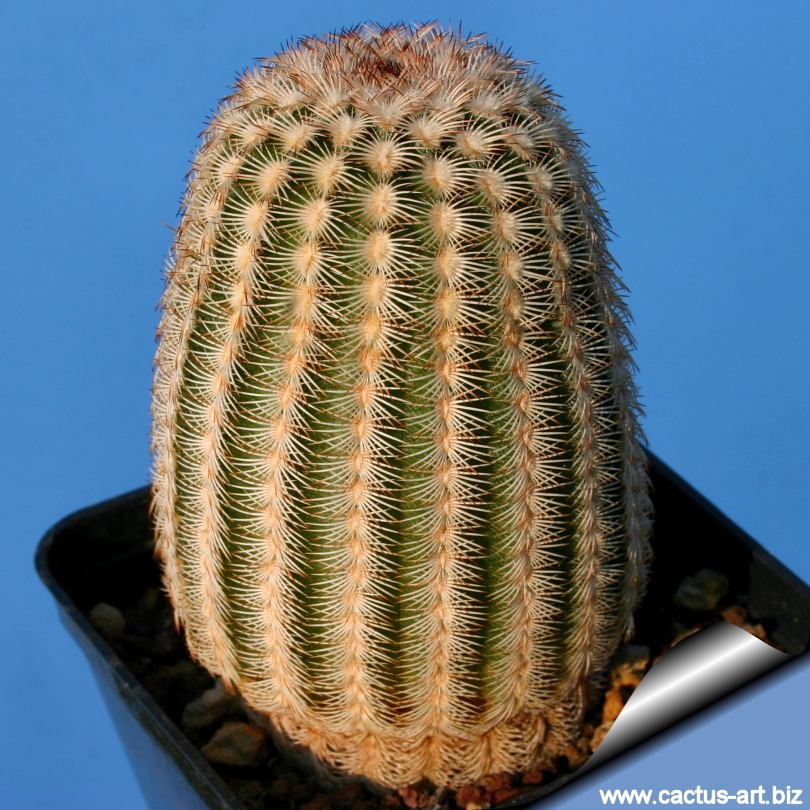
Echinocereus reichenbachii ssp. caespitosus
Also known as the “White Lace Cactus of Texas” it is a fine plant
with very attractive, large, fragrant pink blooms, unusual in the flat
clusters of spines which spread comb-like back over the ribs.
|
|
Description:
Slowly branching cylindrical shaped cactus with up to 12 branches.
Stem: Erect, cylindrical or short cylindrical, 7 to 40 cm tall,
2,5 to 10 cm in diameter
Ribs: 10-19 straight or slightly undulate.
Areoles:1-6(-10) mm apart.
Radial spines: 20 to 36 , straight to slightly curved, held
closely against the the ribs of the stems, organized in 2 series,
pectinately arranged or nearly so, 5 to 8 mm long. Multi-coloured, white
to tan, dull pink, dark brown, or purplish black.
Central spines: 0 to7 ( but usually absent) small , terete,
1-6(-15) mm long, often darker yellowish with a brown tip, at first,
whitish on older areoles.
Flowers: Beautiful, abundant, scented, intense pink flowers, 5 to
7 cm long (5-7 cm). Flower tube 22-40 × 10-30 mm; flower tube hairs 5-15
mm; inner tepals silvery pink to magenta, usually white, crimson, green,
or multicoloured proximally, 23-40 × 5-15 mm, tips relatively thin,
delicate; anthers yellow; nectar chamber 2-5 mm. The basis of flowers
are clothed with dense greyish wool.
Blooming season: Early May to Late June.
Fruit: Ovoid green, olive green, or dark green, fruit up to 28 mm
long; fruiting 1.5-2.5 months after flowering.
Seeds: Black.
|
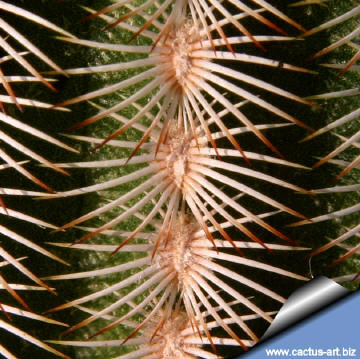 |
 |
| . |
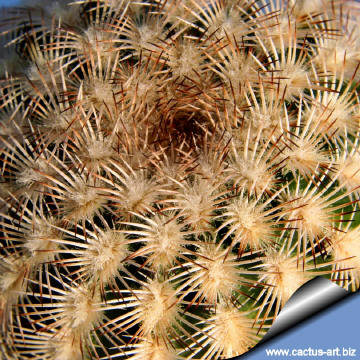 |
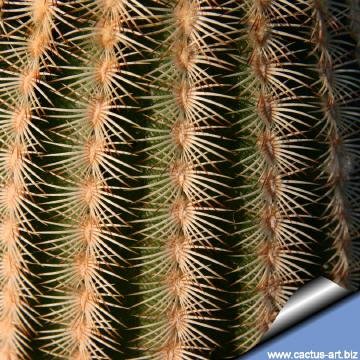 |
|
Echinocereus
reichenbachii is cold-hardy and endures frost as long as it is kept dry.
. |
|
Cultivation: It is sensitive to overwatering (rot prone) needs a
very good drainage to avoid rotting, but requires more moisture than
true desert cacti to grow and produce flowers, Keep drier and cool in
winter. Need full sun. It is very cold resistant from -10° to -25°
C (depending on clones) or less for short periods of time. It is a fine
plant for a rock garden or container, contrasts well with agaves,
yuccas, and low-growing flowering plants.
Propagation: Seeds, also can be grown from cutting as it slowly
branches from the base.
Advertising |
|
|
|
|
Family:
Cactaceae (Cactus
Family) Echinocereus
reichenbachii var. caespitosus (Engelmann) Engelmann
Accepted
Scientific name: Echinocereus
reichenbachii ssp. reichenbachii
(Terscheck ex Walpers) Haage Jr. ex
Britton & Rose
Pubblished in:
Cactaceae. 3: 25. 1922.
Origin: The so called
"caespitosus" is the form found in central Texas.
Habitat:
It thrives in a variety of sites and
soils often found growing out of cracks in solid limestone rock.
Conservation status: Listed in
CITES appendix 2.
Common English Names include:
The popular name of
Echinocereus reichenbachii
is Lace hedgehog cactus or simply Lace Cactus (due to the look of the
spines). Other names are: Black Lace Cactus, Classen's Cactus, Merry
Widow Cactus, Purple Candle Cactus.
Synonyms:
The Echinocereus reichenbachii
species group (E. reichenbachii, E. chisosensis,
E. rigidissimus, E. pseudopectinatus, and a
number of Mexican species) has unusually thin, bristle-like spines
clothing the flowers and fruits as well as conspicuous, cobwebby
tomentum of unusually long areolar hairs. The persistent, dry, white
features of the flower tube are an essential distinction contrasting
with the otherwise similar E. pectinatus species group (E.
pectinatus, E. dasyacanthus, and possibly E. bonkerae),
regardless of the spectacular, colourful floral displays.
subsp.
caespitosus: The common
plants of E. reichenbachii in Texas, usually lacking
central spines, are weakly distinguished from typical E.
reichenbachii and are the basis for E. reichenbachii
subsp. caespitosus. Oklahoma populations with unusually long
bristlelike spines were named E. baileyi Rose [E.
reichenbachii subsp. baileyi]. They intergrade, however,
with the nearby, short-spined populations of E. reichenbachii.
Echinocereus reichenbachii var. albispinus pertains to
intermediates between E. baileyi and E.
reichenbachii subsp. (or var.) caespitosus.
|
|
|
|
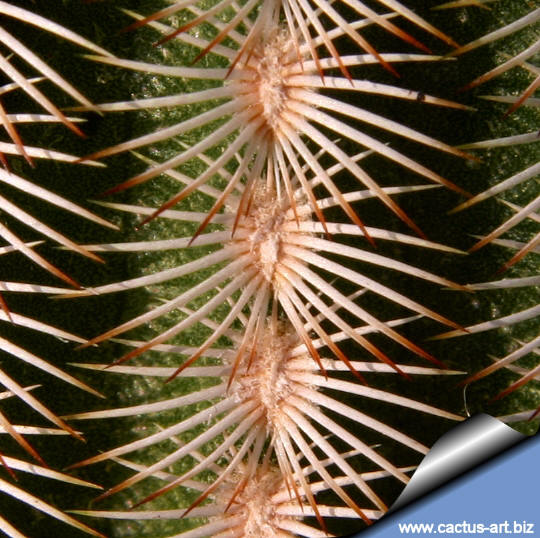
|
| Photo of conspecific
taxa, varieties, forms and
cultivars taxa
of
plants belonging to the
Echinocereus reichenbachii
complex
(This
Taxon
has lots of synonyms whit several controversial varieties and subspecies):


|
|